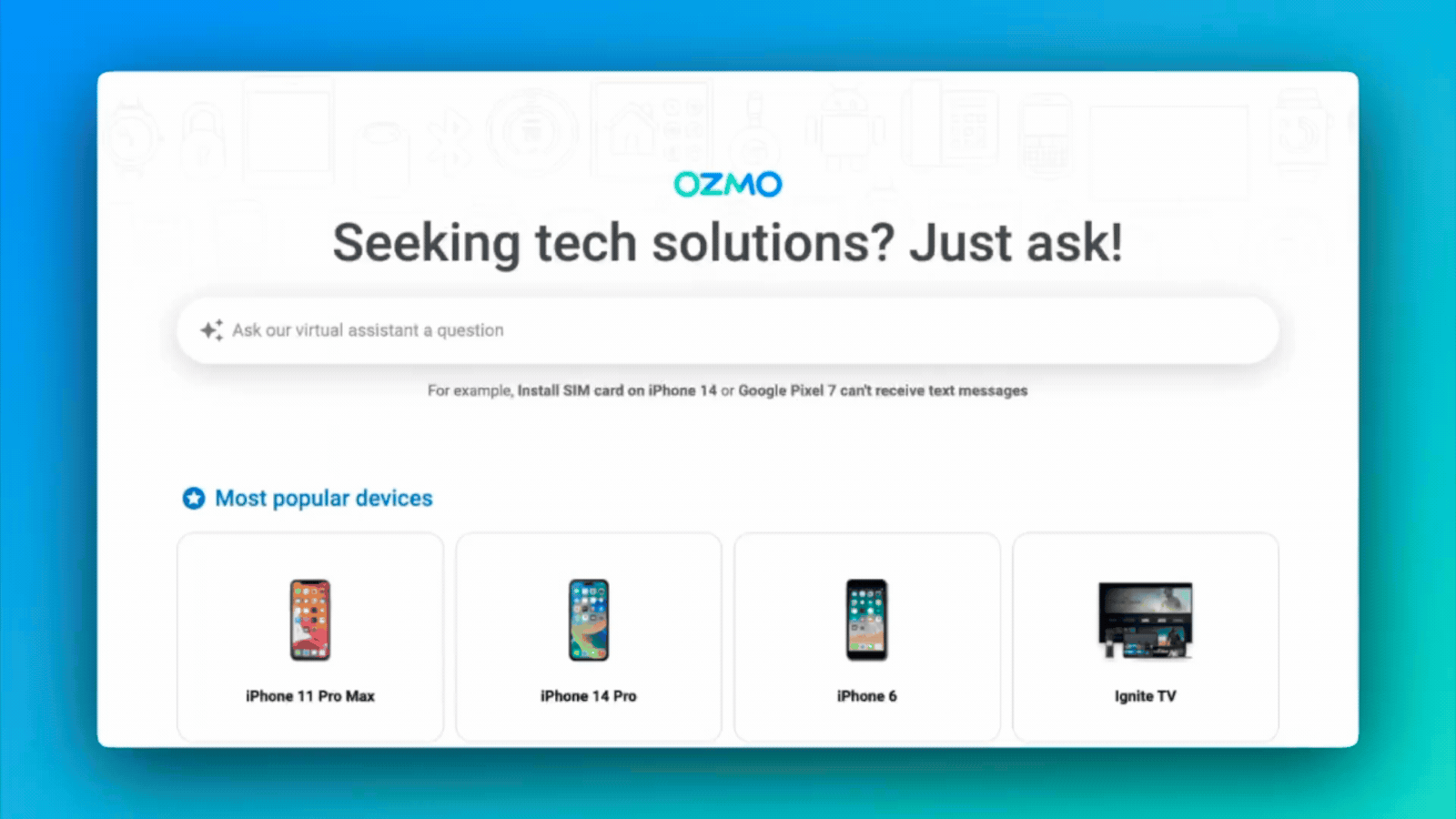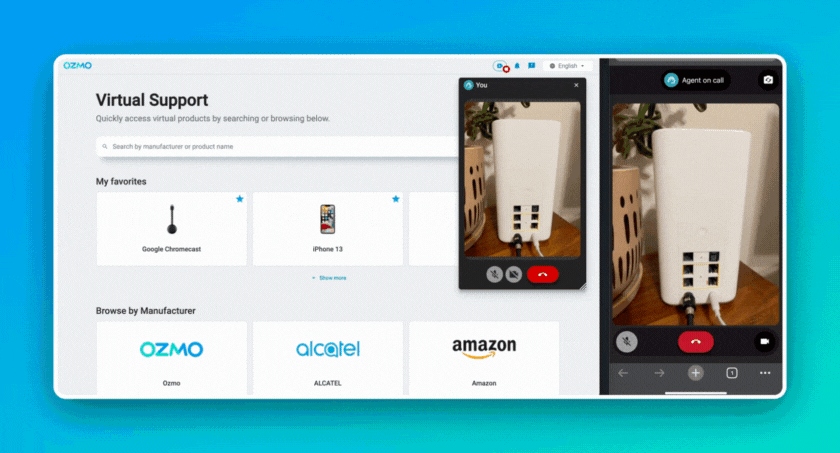Customer support is now crucial for telecom providers seeking to increase customer loyalty and profits. Customers who have positive service experiences are 15 times more likely to say they’re loyal to a brand.
However, what worked last year won’t necessarily be effective this year for maintaining competitive customer service. After all, the world of telecom and broadband is changing fast. Companies that fail to keep pace with rapidly emerging customer support trends and adapt accordingly will struggle to compete in an increasingly crowded market.
That doesn’t have to be the case for your business. Below, we’ll go over the top customer support trends in the telecom industry in 2026 and the potential benefits for your business.
The top telecom customer support trends in 2026
2026 will give rise to critical trends in telecom customer support. Companies that don’t take the time to plan around these shifts risk being left behind in the new year. We’ll go over some of the most significant trends reshaping the telecom industry below.
AI-driven support augmentation
To be clear, AI can’t replace humans in customer service. Instead, contact centers will leverage AI to enhance agent performance and help them better assist customers.
Research shows that 93% of customers prefer to speak with a live agent rather than interacting with AI. That doesn’t mean you shouldn’t use AI for customer service. However, it does mean that rather than replacing contact center agents, AI will be a critical tool in their tech stack to help them perform their jobs more effectively.

Using AI chatbots for broadband customer support can lead to more intelligent routing, ensuring customers are directed to the right agent for their problem the first time. This can help streamline the tech support experience and reduce episodes of customer rage.
Additionally, you can leverage AI to improve call center agent productivity. For example, researchers at Harvard Business School found that AI helped contact center agents respond to customer chat requests up to 20% faster. This, in turn, could help improve average handle time (AHT), allowing them to serve more customers in less time.
The bottom line? Rather than replace contact center agents, AI will help them work smarter, not harder.
Live video support will be critical for troubleshooting
Undoubtedly, live video is the future of customer support. Visual support has been gaining traction in recent years, and in 2026, it will be a core part of proactive customer service.
Companies can harness the power of video-based customer service for faster troubleshooting and improved first-call resolution rates. This is because, rather than trying to describe an issue with a device or service over the phone, the customer can show the agent what’s happening in real-time.
In turn, this helps the agent provide faster and more accurate troubleshooting. They can even use the screen to give customers tailored, step-by-step guidance, showing them what to press and where to find it.
However, it’s not just customers that win out with visual support. There are also many financial benefits of video chat customer service for the companies that provide it.
For example, because live video can lead to more accurate remote tech support, your business can reduce the need for expensive truck rolls. Additionally, better customer support also reduces customer churn rates, and it’s much cheaper to retain your current customers than constantly try to acquire new ones. Live video support has the power to create a win-win for both customers and telecom service providers in 2026.

Omnichannel experience and seamless integration
Omnichannel customer service refers to using a single source of truth to create a unified experience across all platforms and touchpoints. In other words, whether it’s a contact center agent or the customer themselves, everyone has access to the same information, whether interacting over the phone, via SMS or email.
In previous years, many service providers relied on siloed multichannel tech support. The quality of the information the agent or customers see varies, depending on which channel they’re using. This can lead to increased frustration and churn rates for your business.
In 2026, a comprehensive support platform will be critical for turning your call center into a revenue driver. Contact centers are now strategic assets for your business. Businesses that implement omnichannel customer service can see up to a 15% increase in revenue.
Comprehensive support is also key to staying competitive in an increasingly crowded telecom market. Customers don’t give second chances to businesses that fail to meet their expectations. Research shows that over half of customers switch telecom providers due to poor customer experiences. Telecom businesses that implement omnichannel customer service can improve their net promoter score (NPS) and tap into potential revenue opportunities.
The need for self-service ecosystems will rapidly expand
Self-service technology is essential for staying ahead of the competition. This is especially true for regional service providers (RSPs) to maintain competitive support. After all, these small businesses have limited staff and smaller budgets, and self-service can help them scale to meet the needs of a growing customer base that demands fast responses.
Additionally, telecom companies can implement self-support tools for network disruptions to ensure customers can continue to receive the help they need. Even the best service providers experience outages or disruptions to service. Self-support tools can be crucial in ensuring that, despite these hiccups, customers can receive help with any pressing tech issues.
So, how can telecom industry leaders ensure they provide effective automated support? A critical first step is to ensure you have a strong self-service knowledge base. Static FAQ pages are no longer going to cut it in 2026.
Instead, the contact center teams of the future will need to ensure their self-service knowledge base dynamically updates, so they can keep up with the multiple software updates and device releases that happen each year. This helps teams rest easy and creates a better customer experience by ensuring all customers have instant access to the most accurate information possible.
Additionally, CX leaders will want to implement the use of interactive tutorials to provide customers with step-by-step guidance for more effective troubleshooting. Unlike text-based articles, these tutorials are optimized for learning. They help people better retain critical information, which is key considering that nearly two-thirds of the population identifies as visual learners.
Companies need to lean into self-service now more than ever. Brands that fail to do so, or don’t implement it effectively, risk being left behind.
Tech support will be key for MVNEs to increase revenue
First, what is an MVNO vs. an MVNE? An MVNO (Mobile Virtual Network Operator) provides direct-to-consumer telecom services without owning any of the underlying infrastructure.
Typically, this behind-the-scenes technology is owned by the MVNE (Mobile Virtual Network Enabler). In short, MVNOs are customer-facing, while MVNEs provide the MVNO with the necessary tools to succeed.
This is where MVNE tech support is critical for driving revenue. MVNOs have endless choices for service providers. If an MVNE doesn’t give them what they need, it’s easy to go somewhere else.
MVNEs can offer tech support as a value-added service to help differentiate their offering from the competition. Quality tech support can help improve customer retention rates, increase profitability and improve the company’s reputation. As the MVNO market rapidly grows, MVNEs that prioritize tech support are well-positioned for success.
Hit the ground running with these customer support trends in 2026
In the new year, customer support will be key to brand differentiation in broadband and telecom. Customer experience is becoming a critical factor for purchasing decisions, especially for lifestyle products like telecom and broadband services.
Telecom businesses should begin preparing now for 2026. By studying and understanding the trends outlined here, CX leaders can develop effective customer retention strategies that help their brand stand out in an increasingly saturated market.
Are you looking to use customer support to stay ahead of the competition? Check out our free guide to optimizing support for your telecom business. It explores how to leverage AI, virtualized agent training and other tools to help you scale and streamline the customer experience. Download your free copy today!




